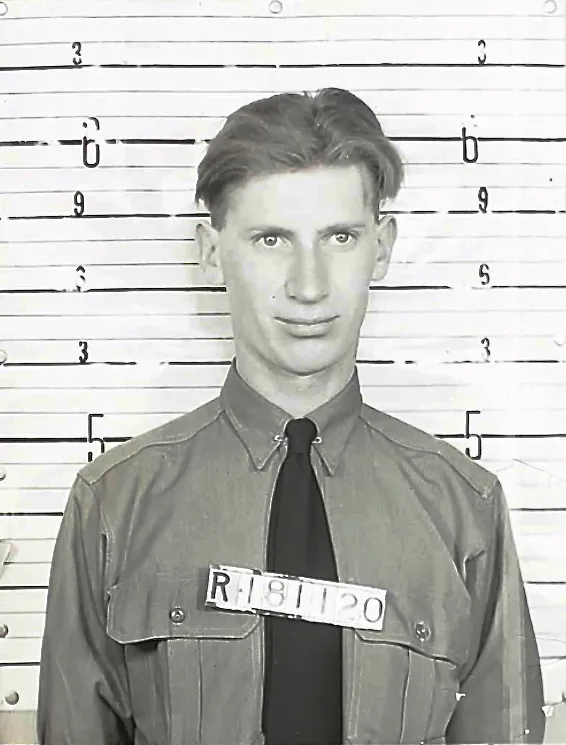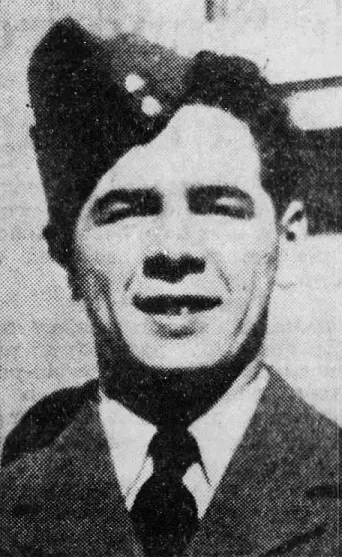Davidson, Alexander (Flight Sergeant)
Killed in Action 1943-August-24


Birth Date: 1923-September-18
Born:
Parents: Son of Alexander Davidson, and Agnes Davidson, of New Westminster, British Columbia.
Spouse:
Home: Williams Lake, British Columbia
Enlistment:
Enlistment Date: unkown date
Service
RCAF
Unit
75 (B) Sqn- Squadron (RAF)
Ake Ake Kia Kaha For ever and ever be strong
Base
RAF Mepal
Rank
Flight Sergeant
Position
Air Gunner (Rear)
Service Numbers
R/181120
Target
Temporary Burial
Remains were later exhumed from this location and reburied
Crew or Other Personnel
Stirling EE938
Mission
Stirling EE938
Bombing Berlin Germany 1943-August-24 to 1943-August-24
75 (B) Sqn (RAF) RAF Mepal
75 New Zealand Squadron (Ake Ake Kia Kaha) RAF Mepal. Stirling III aircraft EE 938 AA-X lost during an operation against targets in Berlin, Germany. While over the target, the Stirling was coned by searchlights and attacked by night fighter pilots Hauptmann Friedrich Karl Muller of Stab/JG 300 and Major Helmut Lent of Stab/NJG 3. The bomber crashed near Mahlsdorf, ESE of Berlin with the loss of the entire crew
Sergeant Joseph Andrew Cletus Holmes (RCAF), Flight Sergeant Alexander Davidson (RCAF), Sergeant Andrew Bain (RAFVR), Warrant Officer Trevor Fear (RAFVR), Sergeant Brian Hartley Ruddy (RAFVR), Sergeant George Douglas Woolcott (RAFVR) and Sergeant Charles Munro (RAFVR) were all killed in action and buried in Germany with the exception of Sergeant Munro, who was missing presumed killed in action. Sergeant Munro has no known gave and is commemorated on the Runnymede Memorial
Nachtjager Luftwaffe Night Fighter Units 1939-1945 by David P Williams
![]() Royal Air Force Serial and Image Database
Royal Air Force Serial and Image Database
![]() EE938 - Der am 24 August 1943 uber Mahlsdorf abgeschossene Stirling -...
EE938 - Der am 24 August 1943 uber Mahlsdorf abgeschossene Stirling -...
Stirling serial: EE938

In June 1944, this Short S.29 Stirling B Mk. IV (Serial No. LK589), coded V3, RAF, was flown across the Atlantic as part of a navigation training exercise and did a tour of bases in Eastern Canada. It is shown here at Malton, Ontario. It was flown back to the UK after a two-week visit.
The Short Stirling was a British four-engined heavy bomber of the Second World War. It has the distinction of being the first four-engined bomber to be introduced into service with the Royal Air Force (RAF).
The Stirling was designed during the late 1930s by Short Brothers to conform with the requirements laid out in Air Ministry Specification B.12/36. Prior to this, the RAF had been primarily interested in developing increasingly capable twin-engined bombers but had been persuaded to investigate a prospective four-engined bomber as a result of promising foreign developments in the field. Out of the submissions made to the specification Supermarine proposed the Type 317, which was viewed as the favourite, whereas Short's submission, named the S.29, was selected as an alternative. When the preferred Type 317 had to be abandoned, the S.29, which later received the name Stirling, proceeded to production. In early 1941 the Stirling entered squadron service. During its use as a bomber pilots praised the type for its ability to out-turn enemy night fighters and its favourable handling characteristics whereas the altitude ceiling was often a subject of criticism. The Stirling had a relatively brief operational career as a bomber before being relegated to second line duties from late 1943. This was due to the increasing availability of the more capable Handley Page Halifax and Avro Lancaster, which took over the strategic bombing of Germany. Decisions by the Air Ministry on certain performance requirements (most significantly to restrict the wingspan of the aircraft to 100 feet) had played a role in limiting the Stirling's performance; the 100ft limit also affected earlier models of the Halifax (MkI & MkII) though the Lancaster never adhered to it.
During its later service, the Stirling was used for mining German ports; new and converted aircraft also flew as glider tugs and supply aircraft during the Allied invasion of Europe during 1944"“1945. In the aftermath of the Second World War, the type was rapidly withdrawn from RAF service, having been replaced in the transport role by the Avro York, a derivative of the Lancaster that had previously displaced it from the bomber role. A handful of ex-military Stirlings were rebuilt for the civil market. Wikipedia


